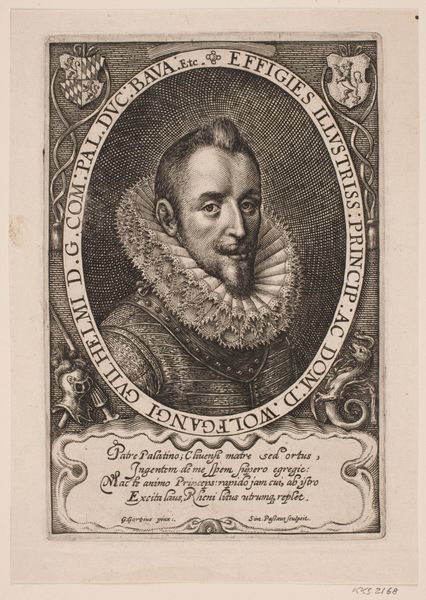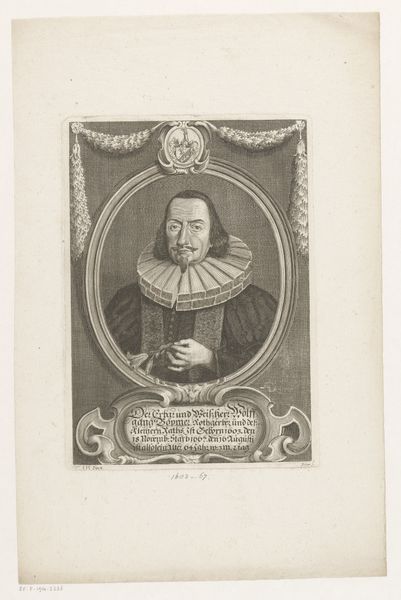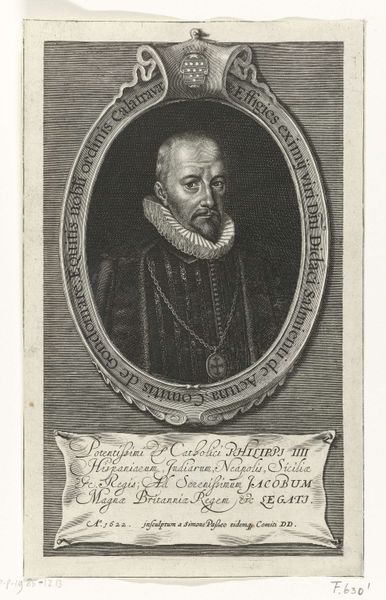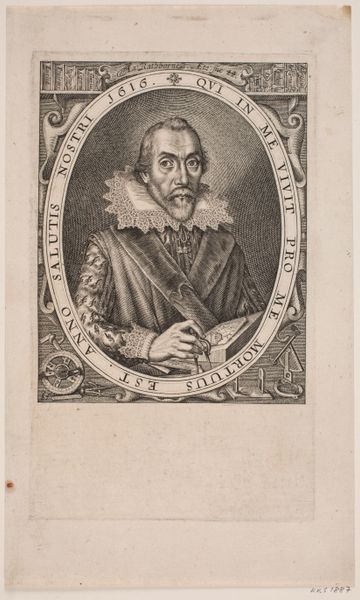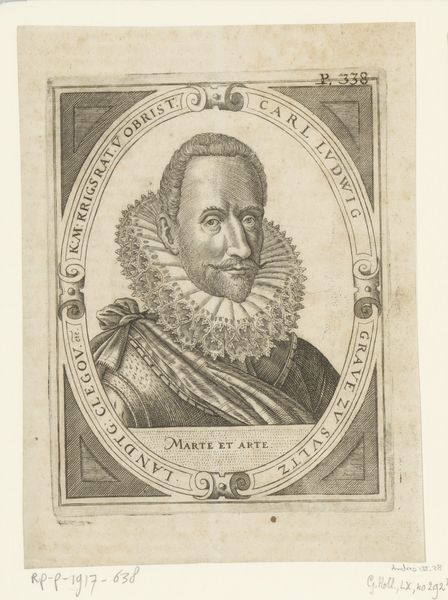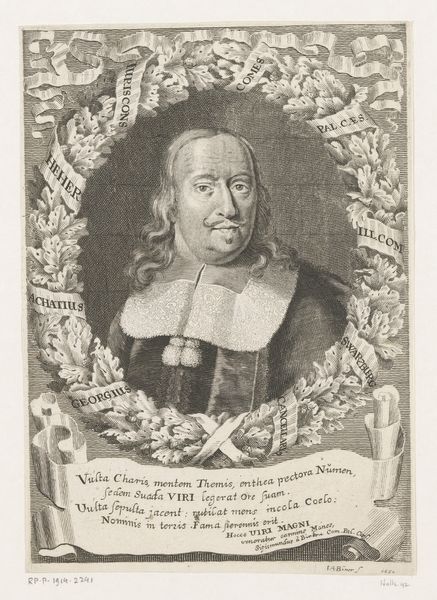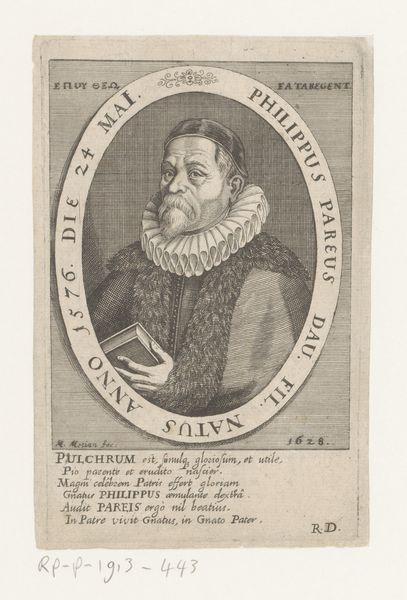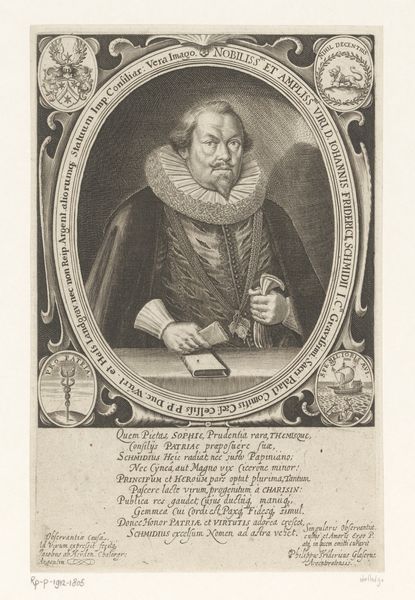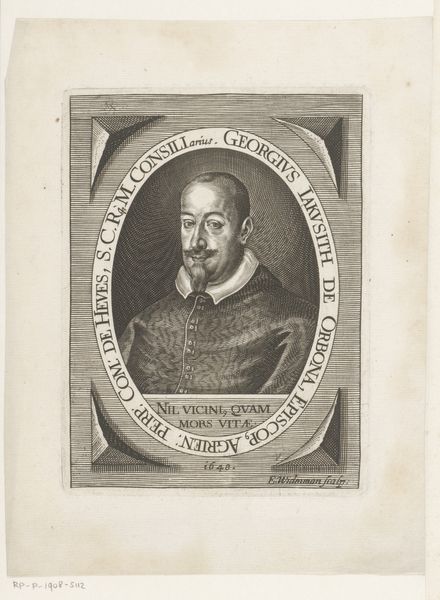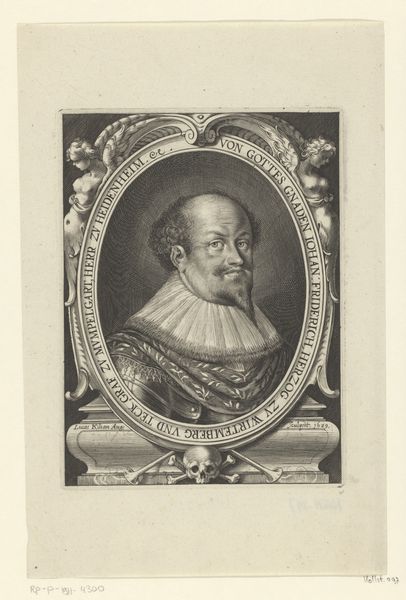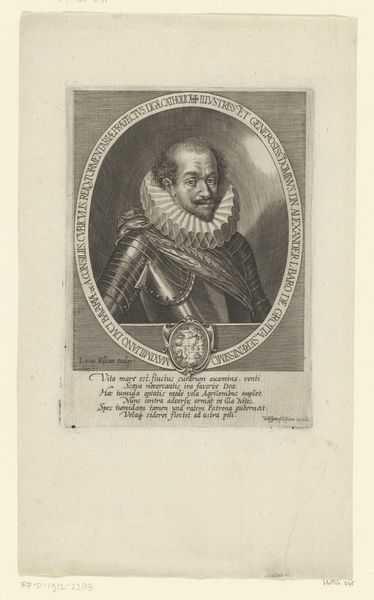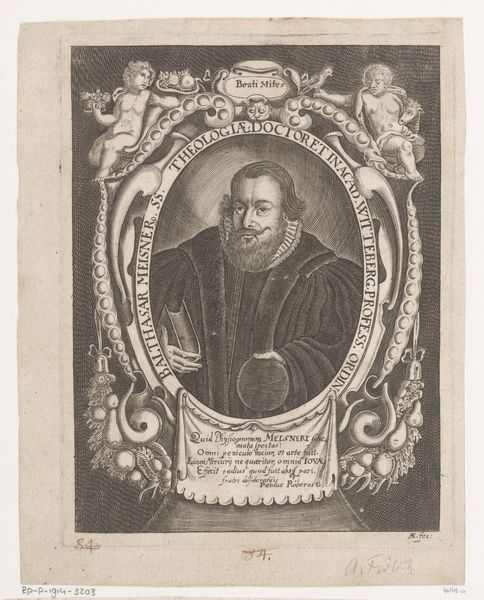
graphic-art, print, engraving
#
portrait
#
graphic-art
#
baroque
# print
#
history-painting
#
engraving
Dimensions: height 208 mm, width 132 mm
Copyright: Rijks Museum: Open Domain
Curator: It's an intriguing example of Baroque portraiture, but to truly understand it, we must delve into its materiality and production. Editor: Absolutely. This is "Portret van Johann Jacob Anholt" by Lucas Kilian, created in 1629. It’s an engraving. The detail is incredible, especially in the ruff. How can we understand the message being conveyed by these materials and techniques? Curator: Consider the labor involved in creating an engraving like this. Each line is meticulously etched, reflecting the artist's skill, but also a network of artisans, distributors, and ultimately, consumers of these images. The lines delineate not just the figure, but a social hierarchy where access to such detailed imagery reinforced class distinctions. Editor: So, it’s less about Anholt's individual story, and more about the broader system that allowed his portrait to exist and circulate? Curator: Precisely! The choice of engraving, a reproducible medium, hints at a desire for wider distribution than a unique painted portrait. How does this choice of medium inform our reading of the subject? Was it accessible to most people? Editor: Well, I imagine prints were still relatively expensive, likely intended for those who held some political power or belonged to a higher class, and wanted to be recognized for their achievements in war and society. What can be said about Anholt's legacy given that so much effort was spent portraying him with this style and these materials? Curator: Right! This tells us more about the society constructing Anholt's image for consumption. The armor is more symbolic in such material, and intended to signal power dynamics more broadly, making him memorable, shaping him into something bigger. What lasting insights does exploring its production give you? Editor: I see now; looking at the medium and means of production helps contextualize the artwork within its historical and social environment. This reframes portraiture beyond simply representing a person, revealing how artistic choices contribute to broader power structures. Curator: Exactly. It invites us to rethink these images as active participants in the cultural and social landscape of the time.
Comments
No comments
Be the first to comment and join the conversation on the ultimate creative platform.
